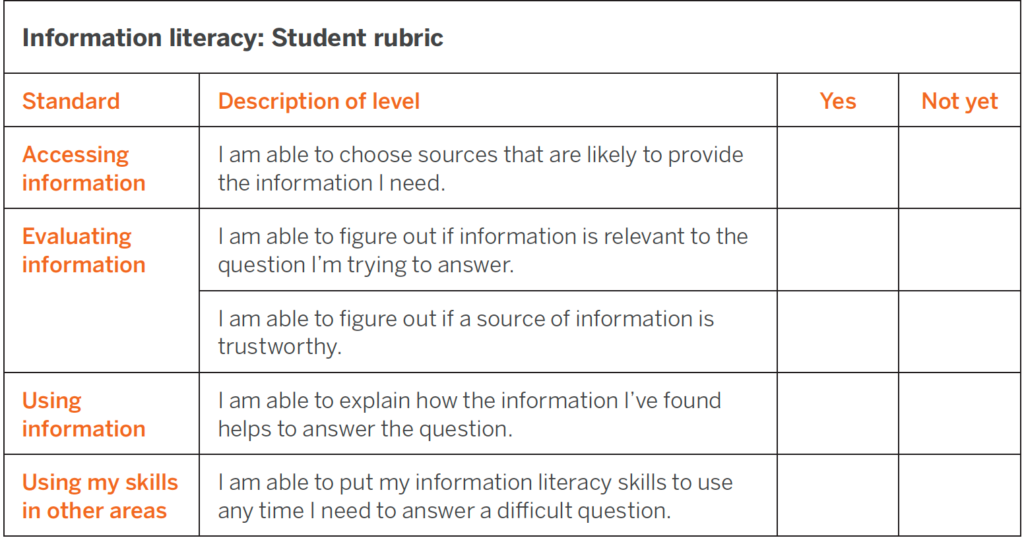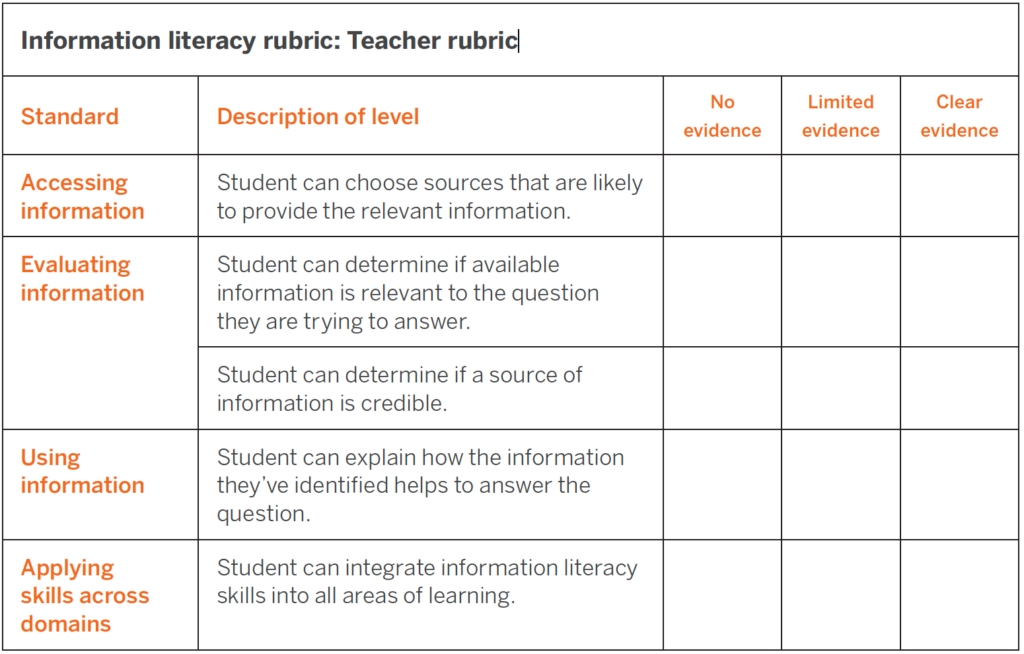Rubrics
Jump to:
Adaptable rubrics for science and engineering practices
This section includes adaptable rubrics for science and engineering practices that students and the teacher may use to support the Portfolio Assessment and other work completed throughout the year. Student-facing and teacher-facing rubrics are provided for each of the following practices: Constructing Explanations, Engaging in Argument from Evidence, and Developing and Using Models.
Download the rubrics as a PDF: AmplifyScience_Adaptable-rubrics-for-science-and-engineering-practices.pdf
| Constructing explanations: Student rubric | |||
|---|---|---|---|
| Criterion | Description of level | Yes | Not yet |
| Responsive | My explanation answers a question about how or why something happened. | ||
| Causal and explanatory | My explanation goes beyond describing the things I can easily observe to explain why or how those things happened. | ||
| Clear and well-organized | My explanation is written in a way that my audience can understand and uses scientific language appropriately. | ||
| Grounded in evidence | My explanation uses what I learned from investigations and from reading. | ||
| Constructing explanations: Teacher rubric | ||||
|---|---|---|---|---|
| Criterion | Description of level | No evidence | Limited evidence | Clear evidence |
| Responsive | Student writing answers a question about how or why something happened. | |||
| Causal and explanatory | Student writing goes beyond describing the observable phenomenon to explain why or how that phenomenon came to be. | |||
| Clear and well-organized | Student writing is written with the audience in mind. It meets the expectations for writing emphasized in the classroom (e.g., using appropriate vocabulary, using transition words). It uses scientific language appropriately. | |||
| Grounded in evidence | Student writing is consistent with accepted scientific concepts and data encountered in the unit. | |||
| Engaging in argument from evidence: Student rubric | |||
|---|---|---|---|
| Criterion | Description of level | Yes | Not yet |
| Responsive | My argument includes a claim that answers the question. | ||
| Provides supporting evidence | My argument includes evidence that supports my claim. | ||
| Justified by the reasoned use of evidence | My argument uses scientific concepts to interpret data and to explain how the evidence I’ve included supports my claim. | ||
| Clear and well-organized | My argument is written in a way that my audience can understand.
My argument uses scientific language appropriately |
||
| Engages with alternative claims | My argument considers alternative claims and critiques them | ||
| Engaging in argument from evidence: Teacher rubric | ||||
|---|---|---|---|---|
| Criterion | Description of level | No evidence | Limited evidence | Clear evidence |
| Responsive | Arguments include a claim that fully addresses the problem or question at hand. The argument should go beyond describing an observed phenomenon by proposing a claim that accounts for how or why the observed phenomenon occurred. | |||
| Provides supporting evidence | Argument employs high-quality information as evidence to support the claim. | |||
| Justified by the reasoned use of evidence | Argument connects available evidence to the claim in a way that will convince the audience that the proposed explanation is the best one available. | |||
| Clear and well-organized | Argument is written with a structure that makes it easy for the intended audience to understand, and uses scientific language appropriately. | |||
| Engages with alternative claims | The argument considers alternative claims and critiques them. | |||
| Developing and using models: Student rubric | |||
|---|---|---|---|
| Criterion | Description of level | Yes | Not yet |
| Representative: Does my model accurately reflect the aspects of the natural world being investigated or tested or of the designed world being tested? | My model includes the variables that are important to the idea I am testing, or to the phenomenon I am trying to explain. | ||
| My model accurately represents interactions among the parts of the system I am investigating, or among the elements of the solution I am proposing. | |||
| [If relevant to the model] I am able to use my model to test relationships among variables, or to make predictions about natural or designed systems. | |||
| Explanatory: Does my model serve to clarify the system, mechanism, or design solution I am proposing? | My model clearly communicates to the intended audience how a system functions, why a phenomenon occurs, or how my design will solve a problem. | ||
| My model includes all necessary variables and information in a clear way, and avoids unnecessary, distracting, or confusing elements. | |||
| Aware of limitations: Do I understand what predictions or conclusions are appropriate to draw from my model? | I am able to identify and describe the limitations of my model. | ||
| Responsive to evidence: Do I know how to revise my model in the face of new evidence or test data? |
My model reflects revision and refinement based on evidence from testing or about the phenomenon under investigation. | ||
| Developing and using models: Teacher rubric | ||||
|---|---|---|---|---|
| Criterion | Description of level | No evidence | Limited evidence | Clear evidence |
| Representative: Does the model accurately reflect the aspects of the natural world being investigated or of the designed world being tested? | The model includes the variables or parts of the system that are important to the idea being tested, or to the phenomenon being explained. | |||
| The model accurately represents the interactions and relationships among the parts of the system being investigated, or among the elements of the solution being proposed. | ||||
| [If relevant to the model] Student is able to use the model to test relationships among variables, or to make predictions about natural or designed systems. | ||||
| Explanatory: Does the model serve to clarify the system, mechanism, or design solution being proposed? | The model clearly communicates to the intended audience how a system functions, why a phenomenon occurs, or how the student’s design will solve a problem. | |||
| The model includes all necessary variables and information in a clear way, and avoids unnecessary, distracting, or confusing elements. | ||||
| Aware of limitations: Does the student understand what predictions or conclusions are appropriate to draw from the model? | The student is able to identify and describe the limitations of the model. | |||
| Responsive to evidence: Does the student know how to revise the model in the face of new evidence or test data? | The model reflects revision and refinement based on evidence from testing, or about the phenomenon under investigation. | |||
Information literacy rubrics
Supporting students with effective use of library and media resources within and beyond your school setting is a key avenue for cultivating information literacy skills. During Amplify Science units, teachers can take opportunities to engage their students in a research project that supports students’ development of information literacy while also enhancing student learning about the central phenomenon under investigation in the unit.
The following rubrics support the analysis of students’ Information Literacy skills during this type of extension activity. Included are both student- and teacher-facing rubrics to support self-reflection and external review of student work.
Download the rubrics as a PDF: AmplifyScience_Information-literacy-rubrics.pdf

